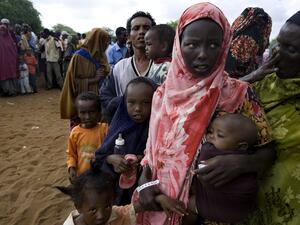Chechnya: increase in flow to Ingushetia
Chechnya: increase in flow to Ingushetia
As a fierce battle between Russian troops and Chechen rebels raged in and around Grozny, the flow of people from Chechnya to Ingushetia increased substantially on Thursday. By 2 p.m. an estimated 2,300 people crossed - the highest daily figure in many weeks. It was not immediately clear whether the group includes residents of Grozny or other areas in Chechnya. Also on Thursday another 800 people went back to Russian controlled areas in northern Chechnya from Ingushetia. The sharp increase in those fleeing Chechnya comes after a week of very limited cross-border movement following a January 11 order by Russian military commanders to bar males between the ages of 10 and 60 from crossing the border. The ban was lifted three days later but all those crossing have since been subject to elaborate checking and body searches by the Russian military and security forces. There are also unconfirmed reports about draft-age men being detained at the border and held by Russian forces in their main military headquarters in Mozdok.
A total lack of international humanitarian and monitoring presence inside Chechnya makes it virtually impossible to assess the number of civilians remaining in Grozny, let alone their plight. The city has become an active battlefield. According to various rough estimates, up to 20,000 civilians remain inside. Over the past few weeks only a handful of people have left Grozny, braving artillery bombardment in and around it. Most civilians are believed to have been hiding in cellars for weeks, without electricity and adequate food or water. Estimates of the number of displaced Chechens now in Ingushetia range up to 180,000.
UNHCR yesterday (20 Jan.) sent its 24th convoy of relief items (12 trucks with food, blankets, tents, beds).




